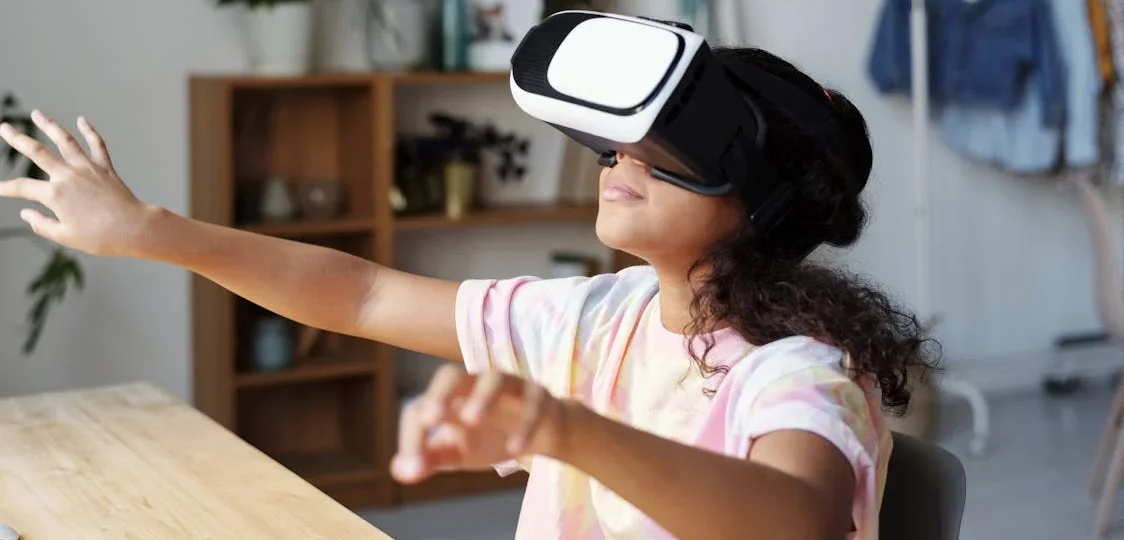
The Importance of VR in Interior Design
The world of interior design is constantly evolving, with technology playing a significant role in reshaping how professionals and clients visualize and execute design ideas. One of the most revolutionary advancements in recent years is Virtual Reality (VR). VR experience in interior design offers an immersive, interactive, and highly accurate way to conceptualize spaces before making any real-world changes. In this blog, we will explore the importance of VR in interior design, its benefits, and how it is transforming the industry.
Understanding VR in Interior Design
Virtual Reality (VR) is a simulated digital environment that allows users to interact with and experience spaces as if they were physically present. In interior design, VR is used to create 3D models of rooms, allowing clients and designers to walk through spaces, experiment with different layouts, and visualize various design elements before committing to them.
The Importance of VR in Interior Design
1. Enhanced Visualization
Traditional methods of presenting interior design concepts rely on 2D sketches, 3D visual images, mood boards, and even physical samples. However, these methods often fail to provide a true sense of space, scale, and harmony. VR allows designers to create realistic 3D simulations where clients can explore every detail, from furniture placement to lighting, offering a more accurate representation of the final outcome.
2. Better Client Communication and Satisfaction
One of the biggest challenges in interior design is ensuring that clients fully understand and approve the proposed design. Miscommunication can lead to dissatisfaction and costly revisions. VR eliminates ambiguity by allowing clients to walk through their future homes or offices virtually, ensuring they are completely satisfied with the design before construction or renovation begins.
3. Cost and Time Efficiency
Making changes to a physical space can be expensive and time-consuming. With VR, clients and designers can experiment with different layouts, color schemes, and materials without incurring additional costs. This reduces the need for expensive modifications during the construction phase and helps streamline decision-making, ultimately saving both time and money.
4. Improved Accuracy and Precision
VR technology ensures that every detail is precisely planned and executed. Designers can create exact measurements, test different configurations, and identify potential design flaws before any work begins. This level of accuracy minimizes errors, reduces material waste, and ensures a smooth execution of the project.
5. Better Collaboration Among Stakeholders
Interior design projects often involve multiple stakeholders, including architects, contractors, and suppliers. VR facilitates seamless collaboration by providing a shared digital space where everyone can review the design, suggest changes, and ensure that all aspects of the project align perfectly.
6. Experimentation with Different Design Styles
Clients often struggle with choosing a particular design style due to the fear of making the wrong decision. VR allows them to experiment with various aesthetics, layouts, and furniture options in a risk-free environment. They can see how different elements interact in real-time, leading to more confident and informed design choices.
7. Increased Competitive Advantage for Designers
For interior designers, adopting VR technology provides a competitive edge. Offering VR experiences to clients sets designers apart from competitors who rely solely on traditional methods. It positions them as innovative professionals who use cutting-edge technology to enhance customer experience and satisfaction.
8. Sustainable and Eco-Friendly Approach
VR helps promote sustainability in interior design by reducing material waste. Since clients can visualize their spaces accurately before making final decisions, there is less risk of purchasing unnecessary materials or making changes that result in discarded resources. This aligns with the growing trend of eco-conscious design practices.
Real-World Applications of VR in Interior Design
Residential Interiors: Homeowners can experience their redesigned homes before construction begins, ensuring that everything meets their expectations.
Commercial Spaces: Business owners can visualize office layouts, retail store designs, and hospitality environments in detail, making better investment decisions.
Real Estate Staging: Real estate developers use VR to create virtual tours of properties, helping potential buyers visualize spaces before making purchases.
Furniture and Decor Selection: Clients can try different furniture and decor options in a virtual setting to see what works best for their space.
The Future of VR in Interior Design
As technology continues to advance, VR is expected to become even more integral to interior design. Features such as AI-powered VR design assistants, real-time customization, and integration with smart home technology will further enhance the experience. The accessibility of VR tools is also improving, making them more affordable and user-friendly for designers and clients alike.
Conclusion
The importance of VR in interior design cannot be overstated. It revolutionizes the way designers create, present, and execute their ideas while providing clients with an immersive, interactive, and highly accurate representation of their future spaces. By enhancing visualization, improving communication, reducing costs, and promoting sustainability, VR is shaping the future of interior design and setting new standards for excellence in the industry. For interior designers looking to stay ahead of the curve, embracing VR is not just an option—it is a necessity.